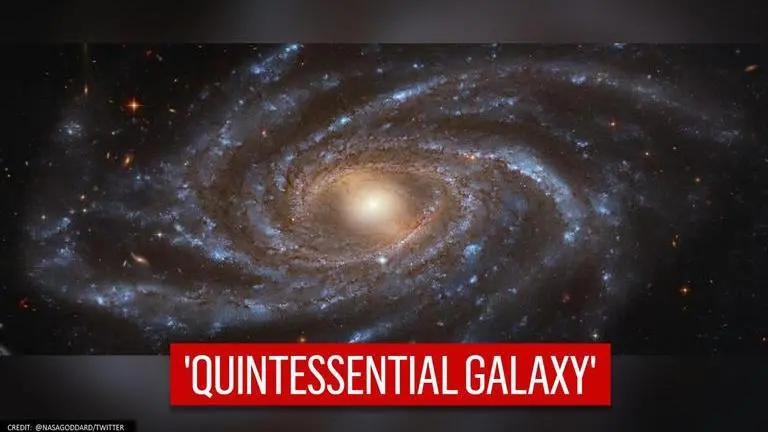Updated 7 March 2021 at 18:27 IST
NASA’s Hubble Telescope captures ‘big, beautiful’ blue galaxy 200,000 light-years away
The NASA/ESA Hubble Space Telescope recently captured a breath-taking image of the “big, beautiful and blue” galaxy GC 2336, which is 200,000 light-years away.
- Science News
- 2 min read

The NASA/ESA Hubble Space Telescope recently captured a breath-taking image of the “big, beautiful and blue” galaxy GC 2336. According to a press note, the spiral armed galaxy may look quite similar to our own Milky Way with its planetary distribution and chromatic features. However, the “quintessential galaxy” is nearly 200,000 light-years across and at a distance of 100 million light-years away in the northern constellation of Camelopardalis (The Giraffe).
In the image shared by NASA, in the centre, one can see a bright yellow orb and all throughout the arms of the galaxy, it is littered with millions of shiny dots, which are stars. According to the press note, the outer stars, bright silver/yellow towards the arm, are younger stars. Whereas, the centre with a more reddish concentration is the older star system.
The space agency informed that the NGC 2336 was discovered in 1876 by German astronomer Wilhelm Tempel. At the time, Tempel had used the most technologically advanced equipment available to him, a 28-centimetre telescope. It is worth noting that the NGC 2336 was a centre of interest for many astronomers and the galaxy had even experienced a Type-Ia supernova, which is the only observed supernova in the galaxy since its discovery 111 years earlier.
Advertisement
Hubble has entered its blue period by capturing this quintessential galaxy — big, beautiful, & blue! 🔵
— NASA Goddard (@NASAGoddard) March 5, 2021
Its spiral arms glitter with young stars, visible in their bright blue light.
This barred spiral galaxy stretches an immense 200K light-years across: https://t.co/u4EaGXJ7Fs pic.twitter.com/yCRcwuerl9
Hubble telescope captures Stingray Nebula
Meanwhile, Hubble Space Telescope has captured some phenomenal images of our cosmos and beyond. Last month, the telescope had even captured Stingray Nebula, which has been fading precipitously since the past two decades as its brightness diminished frantically. Hubble captured two images 20 years apart. The first image was taken with the Wide Field and Planetary Camera 2 in March 1996, where the ageing star appeared in good shape, but in the second image taken in 2020, the nebula’s central star was seen in its final stages of life.
Advertisement
NASA said in a release that the once bright and young nebula was no longer standing out against the black velvet background of the vast universe. “This is very, very dramatic, and very weird,” said team member Martín A. Guerrero of the Instituto de Astrofísica de Andalucía in Granada, Spain. “What we’re witnessing is a nebula’s evolution in real-time. In a span of years, we see variations in the nebula. We have not seen that before with the clarity we get with this view.”
Published By : Bhavya Sukheja
Published On: 7 March 2021 at 18:27 IST
